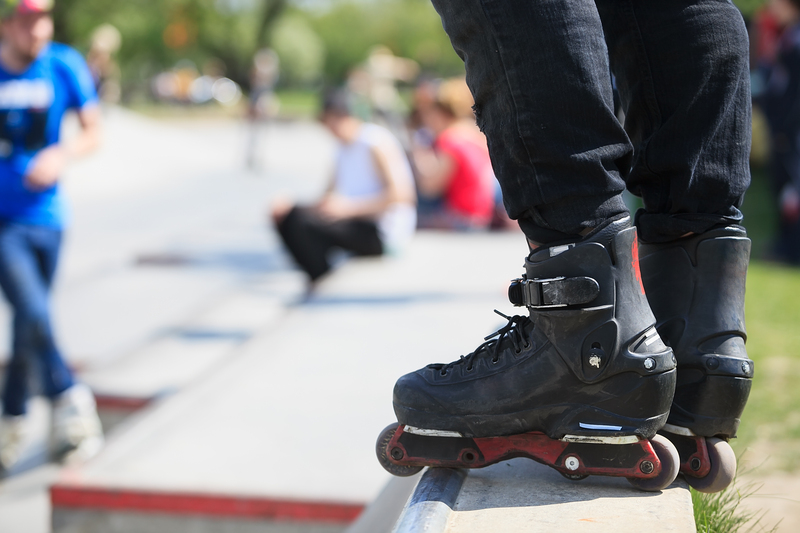Expert Tips on Safely Relocating Your Piano
Posted on 24/06/2025
Expert Tips on Safely Relocating Your Piano
Are you planning to move your piano to a new home or studio? Pianos are not only substantial investments but are also intricate musical instruments with delicate components sensitive to movement and temperature changes. Relocating your piano safely demands careful planning, specialized equipment, and a solid grasp of best practices. In this comprehensive guide, you'll discover everything you need to know about safely transporting your piano--from preparation to professional moving options--ensuring your beloved instrument remains in perfect condition.

Understanding the Challenges of Piano Relocation
Piano moving is far from a standard relocation process. Whether you own a grand piano or an upright piano, these instruments weigh hundreds to over a thousand pounds and contain complex internal mechanisms that can be easily damaged if not handled properly. Let's look at some unique challenges:
- Weight and size: Pianos are heavy and awkwardly shaped, making them difficult to lift and move.
- Delicate structure: The internal strings, hammers, and keys can be damaged by minor jolts or improper handling.
- Finish sensitivity: The exterior finish can scratch or chip easily, impacting not only aesthetics but also value.
- Potential for injury: Improper piano transport can lead to serious personal injuries due to the instrument's weight and bulkiness.
With these factors in mind, it is critical to approach piano relocation with a methodical and well-informed strategy.
Types of Pianos and Their Moving Needs
Your approach to relocating your piano safely will depend on the type and size of your instrument. Understanding the differences helps in choice of equipment and manpower.
Upright Pianos
- Typically between 300-500 lbs.
- Smaller footprint, but still requires multiple people to move safely.
- Can usually fit through standard doorways.
Grand Pianos
- Range from 500-1,400 lbs. and up to 9 feet in length.
- Usually requires partial disassembly (removing legs, pedals, lyre, and sometimes lid).
- Needs specialized skid boards and more movers to ensure safe transport.
Tip: Always check your piano's make and model for moving guidelines in your manufacturer's manual or website.
Piano Relocation Preparation: Essential Steps
Preparation is the cornerstone of moving a piano safely. Follow these essential steps before attempting to move your piano:
1. Gather the Right Supplies
- Piano dollies and skid boards: These distribute weight and make it easier to maneuver large pianos.
- Moving straps: High-strength straps allow a firm grip and stable lifting.
- Thick moving blankets/pads: Protect the instrument's finish from scratches and dings.
- Tools for disassembly: Screwdrivers and bags for safely storing removed parts.
- Packing tape and stretch wrap: For securely fastening blankets and loose parts.
- Measuring tape: To ensure the piano will fit through doorways and hallways.
2. Measure All Pathways
- Measure doorways, hallways, staircases, and elevators.
- Plan the exact route you'll take from the start to the destination room.
- Remove obstacles and secure carpets or rugs along the path.
3. Assemble Your Moving Team
- Never attempt to move a piano alone.
- Enlist the help of at least 3-4 strong adults; more may be needed for grand pianos.
*Hiring professional piano movers is always the safest choice, especially for valuable or large instruments.*
Step-by-Step Guide to Safely Moving Your Piano
Once preparations are complete, follow these detailed steps for secure piano relocation:
Step 1: Prepare the Piano for Moving
- Lock the lid: Close and, if possible, lock the keyboard lid to prevent it from opening during transport. If there's no lock, secure it with stretch wrap or straps.
- Wrap the piano: Use thick blankets or moving pads to cover all surfaces, paying special attention to the corners. Secure the coverings with tape (but never stick tape directly to the piano's finish).
Step 2: Disassemble If Necessary
- For grand pianos, carefully remove the legs, pedals, and lyre using the appropriate tools. Store screws and small parts in labeled bags.
- Protect all detached parts with blankets or bubble wrap.
Step 3: Position the Piano on a Dolly or Skid Board
- With your moving team, gently tip the piano onto its side (for grand pianos, the straight edge).
- Slide the piano smoothly onto a skid board or dolly, making sure it's centered and balanced.
- Use strong moving straps to secure the piano to the dolly/skid board so it does not shift while rolling.
Step 4: Transport Through the Home
- Move slowly and communicate with your team continuously.
- Keep the instrument upright as much as possible. For staircases, one person should be stationed at each end for support.
- Use ramps or stair climbers for multi-level homes (never try to "muscle" a piano up or down stairs without the right equipment).
- Avoid sharp turns and sudden movements that can jostle the piano's internal components.
Step 5: Loading and Securing the Piano in the Moving Truck
- Use a ramp to load the piano onto the truck. Keeping the piano upright, slide it carefully off the dolly and onto the prepared truck floor.
- Position the piano against a wall of the truck, and secure it with ratchet straps to prevent shifting during transit.
- Do not stack other heavy items on or against the piano.
Step 6: Unloading and Re-Assembly
- Repeat the earlier steps in reverse, ensuring the instrument is handled gently at every stage.
- Reassemble any removed parts, and carefully position the piano in its new location.
- Allow the piano 24-72 hours to acclimate to its new environment before tuning or playing intensively.
Piano Moving Mistakes to Avoid
Avoiding pitfalls is just as important as following best practices. Here are common mistakes that can compromise the integrity of your piano move:
- Skipping professional movers: DIY piano moving without experience or equipment is the most common and costly mistake.
- Lack of planning: Not measuring doorways, narrow halls, or stairwells can lead to last-minute disasters.
- Improper lifting techniques: Trying to lift the piano directly (rather than rolling and using straps) increases the risk of injuries and damage.
- Failing to secure: Not strapping the piano during transport can cause it to tip or slide, damaging both the instrument and the vehicle.
- Overlooking climate control: Extreme temperature or humidity changes during relocation can warp wood and detune your piano.
Why Hiring Professional Piano Movers Is Highly Recommended
While DIY is possible for very small upright pianos over short distances, professional piano movers are the safest option for most situations. Here's why hiring specialists is a smart investment:
- Expertise: Pros understand piano anatomy, have years of training, and know how to mitigate risks.
- Equipment: Movers bring dollies, ramps, skid boards, and custom padding that the average person rarely owns.
- Insurance: Licensed movers provide insurance coverage against accidental damage--which standard movers or homeowners' insurance often does not.
- Speed and safety: A professional crew relocates your piano quickly and smoothly, dramatically reducing the risk of injury or harm to both instrument and property.
Ask potential movers about their experience with your specific piano type and request to see their insurance and references.
Post-Move Care: Settling In and Tuning
Once your piano relocation is complete, it's essential to take certain steps to help your instrument recover and thrive in its new home:
- Acclimatize your piano: Wood and metal components need time to adjust to the new room's temperature and humidity. Avoid tuning immediately; wait a few days before your technician performs a tuning.
- Select the right spot: Place the piano away from direct sunlight, heating/cooling vents, and exterior walls to minimize environmental changes.
- Schedule maintenance: Arrange a professional cleaning and inspection to address any issues caused by the move.
Essential Tips for Relocating Your Piano in Different Scenarios
Short Distance Moves
- Even if you're just moving a piano within the same building, always use proper lifting and rolling methods.
- For room-to-room moves, protect floors with sliders to prevent scratching.
Long Distance Moves
- Ensure your mover specializes in out-of-town or state-to-state piano relocation.
- Ask about climate-controlled trucks, as extreme conditions can cause significant internal and external damage.
- Get a clear policy on insurance and claims in the event of mishap.
International Moves
- Work with a shipping company experienced in crate-building and overseas piano transit.
- Get thorough customs guidelines; certain hardwoods and ivory parts may require permits.
- Insist on detailed documentation and insurance.

Frequently Asked Questions About Piano Moving
Can I move a piano myself?
*While possible for small uprights with several strong helpers, it's rarely worth the risk unless you have the proper equipment, training, and help.*
How much does it cost to move a piano?
Piano relocation fees vary based on size, type, distance, and complexity--typically ranging from $200 for a local upright to several thousand for a concert grand cross-country.
Do digital pianos need special moving care?
*Digital pianos are lighter and less fragile, but still require careful handling to protect external finishes and internal electronics.*
Conclusion: Safeguarding Your Piano During Relocation
Relocating your piano safely is a major task--one that requires advanced preparation, the right equipment, and ideally, the aid of professional piano movers. Whether you're moving next door or across the country, every step you take to protect your instrument will help preserve its sound, value, and beauty for years to come.
If you truly cherish your piano, prioritize safety and expertise. With these expert tips, your piano moving experience will be harmonious and hassle-free.
If you have questions about piano relocation services or want a quote from trusted movers, contact local specialists and ensure your treasured instrument is in experienced hands.



